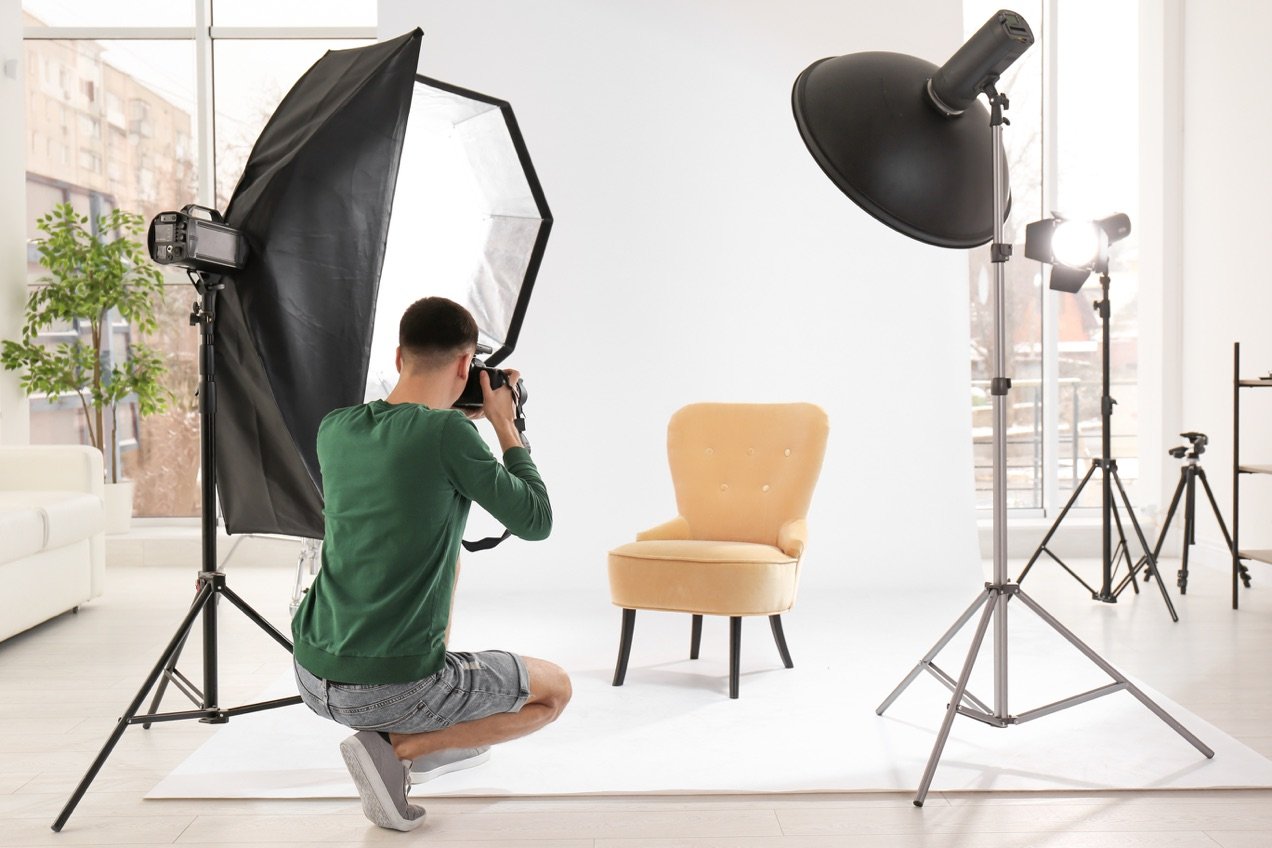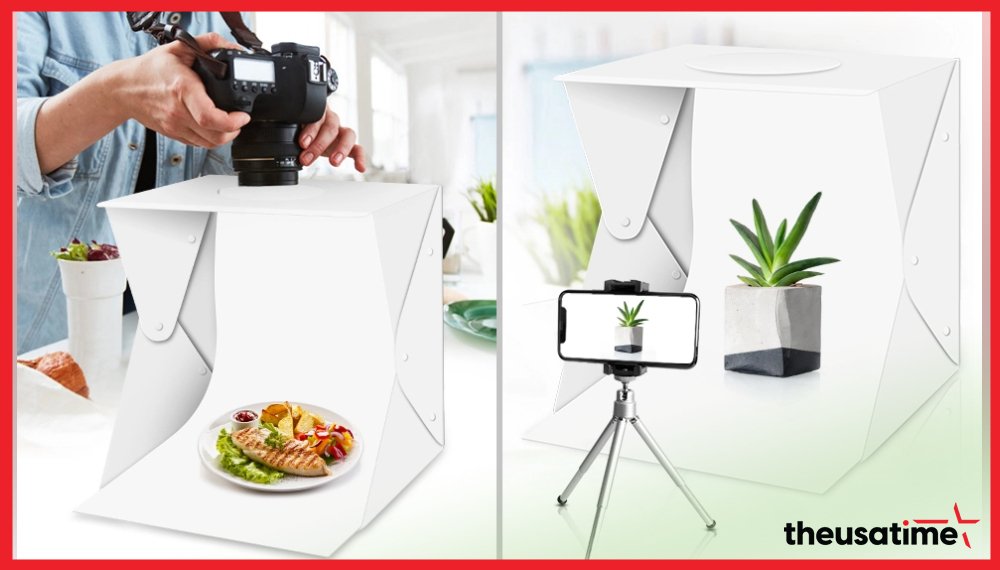Customers want to know they’re getting the right product, so how can you give them that assurance? There are, of course, reviews, testimonials, and product descriptions available. But on the other hand, product photos are crucial to your online store’s success.
[powerkit_toc title=”Table of Contents” depth=”2″ min_count=”4″ min_characters=”1000″ btn_hide=”true” default_state=”expanded”]
These DIY lightboxes and DIY product photos, along with some basic techniques to help you improve your online store’s product photography.
Your product photography should begin with this basic setup
A lightbox is a simple way to make your products appear more professional and appealing. So, what’s a lightbox? One of the most common types of light tents used for photography is the “photo lightbox,” also known as the “white box” or “light tent.” Take a picture of your product in it, and you’ll have a professional-looking product photo that’s well-lit and free of shadows. Simple tools are all you need to make your own DIY lightboxes.

It’s possible to buy a pre-made lightbox for between $20 and $4,000, or you can make one at home for free! The best thing is that you don’t need a high-end digital camera to get started. Even if you’re using the camera on your smartphone to take product photos, a lightbox can help them look better.
It only cost $3.70 and took about 10 minutes to build this lightbox. You’ll require the following equipment:
White tissue paper and white poster board are all that are needed for this project.
- Cut out a cardboard lightbox for product photography.
- Trim the white tissue paper to match the dimensions of the box, and then tape it down with double-sided tape.
- Step 3: A white background can be achieved by snipping a poster board to the same size and then hanging it from the ceiling.
Make your own photo lightbox by following these simple instructions:
Step 1: Make a slit in your lightbox to begin.
Cut off the top flaps of the box with the box cutter. A 1-inch border should be left on each side when cutting out three of the box’s four corners. As you can see, mine is haphazard and free-handed, so don’t stress about it being perfect.
Step 2: Tissue paper must be trimmed and taped in step two.
Tissue paper should be cut to the dimensions of the box’s sides (leaving edges that can be taped down). When you’re finished, cover all holes with tape and tissue paper. Softening and eliminating harsh shadows are two of the many benefits of using tissue paper to diffuse light.
Step 3: Drape the poster board to create a clean white backdrop in step three.
Using a pair of scissors, cut the poster board in half to fit the box. Keep the poster board long enough to extend out of the box so that it can be displayed. In order to create an “infinity” white background without any corners, tape the top of the poster board to the back of the box. To prevent it from curling upwards, tape the poster board’s bottom to the box’s bottom.
Finished with your lightbox?
View this post on Instagram
Using the lightbox, you can now take photos of your products. It is best to place the lightbox in a brightly lit area near a window. Place a desk lamp on top of the lightbox if you don’t have enough natural light to illuminate your workspace. We didn’t use any additional lighting for this example because we found a corner of our office that had a lot of natural light.
Using a homemade lightbox to photograph products
When possible, use natural light rather than artificial light. As long as you’re going for a subtle look, a lamp pointed to your lightbox’s left, or right side will do.Turn off the flash on your camera. Get up close and personal.
Samwell is ready for a day of photography in the lightbox. He will be overseeing for quality purposes Don’t forget we are reopening our shop tomorrow at noon EDT with SO MANY DICE pic.twitter.com/k509OKoOjm
— SnowFootDice (@Snow_Foot_Dice) July 22, 2022
A lightbox and a close-up photograph are excellent tools for emphasizing the finer points of your product while minimizing the impact on the surrounding environment. You should take a variety of photos of your product so that customers can see what they’re getting. Tips for online retailers on how to properly set up product photos
Here are a few more tips on how to take your own product photos and how to set yourself up for success.
Lighting:
Lighting: However, there’s no need to expose your product in an uninspiring manner. However, if your product lends itself to more dynamic lighting, you can also experiment with light and shadow.
White balance:
When we look at something, our eyes automatically adjust the white balance so that white does not appear blue or orange. Cameras, on the other hand, have more issues. For example, like snow appearing blue in photos or an object appearing orange in candlelight, the colour of a product may appear “off” when photographed. You can make your product photos look more realistic by adjusting the white balance on your camera.
Depth of field:
“Shallow” depth of field refers to a photograph in which the subject is clearly in focus while the background is blurred. Having a greater depth of field means that a larger portion of the photo is in focus. In order to draw attention to your product’s close-up details, use a shallow depth of field. This draws attention to the finer points of the product.
Getting creative with product photo backgrounds:
When it comes to product photography, the photo lightbox is a great tool, but it doesn’t have to be the kind of product photo you take.
Consume also like seeing a product in its natural environment. This helps them feel about how they can use the item in their own place, making them more likely to purchase it. This means including a picture of the product against a pleasing backdrop.
Backgrounds and compositions can also be used to convey a specific mood or atmosphere.
Take a picture from multiple angles:
Attempt to capture your product from a variety of angles in order to show it in all its glory. Think about what could be important for your customers: Is there anything crucial that your audience must-see? After that, give them a closer look. Is it possible to see a video of the product in use? Is it important what size something is? Place your product next to a common object so that customers can better gauge its size.
Choose a high resolution for your pictures:
For product photos, we suggest shooting at the highest quality you can. After the fact, a picture’s resolution can always be reduced. In contrast, increasing the resolution will only result in pixelated and grainy results. Here are tips on how to optimise your website images.
Can you take good product pictures with a smartphone?
You can take high-quality photos of your products if you have a smartphone. For example, a smartphone camera can easily compete with a more expensive digital SLR if you’re just starting out with photography. Consider the following:



